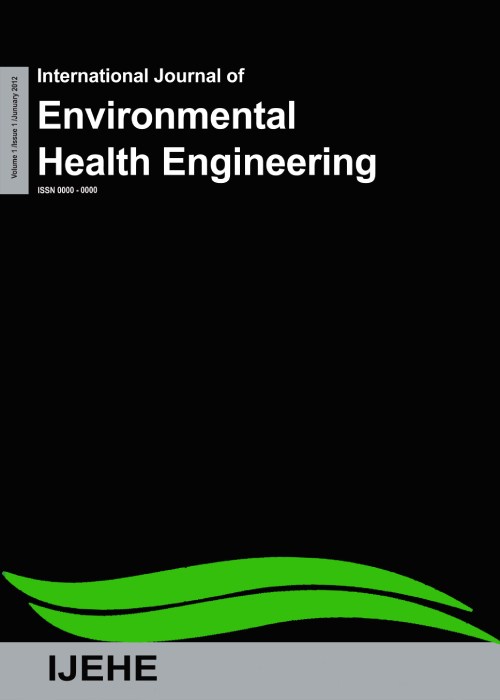فهرست مطالب

International Journal of Environmental Health Engineering
Volume:12 Issue: 1, Feb 2023
- تاریخ انتشار: 1401/11/12
- تعداد عناوین: 3
-
-
Page 1
The advancement of telecommunication technology is vital for our wireless connectivity and networking across the world, but not at the expense of the lives of other organisms because their extinction follows us. This review article highlighted the various communication systems and technologies implemented and their implications. The relevant keywords used for this review, including fifth generation (5G), electromagnetic radiation (EMR), telephone tower, 5G impacts on lives, 5G impacts on human health, animals, and birds, were used for inclusive search on trustworthy citation databases listed in Scopus, PubMed, Web of Science, and Google Scholar from 1993 to 2022. The findings revealed that the radiations range between radio frequency and electromagnetic frequency is causing detrimental effects on different species including their fertility and fetus development. Experts reported that birds use the earth's EMR to navigate in their flight, but when they are exposed to weak or microwave radiation from the telecommunication towers, they deviate from their path, confused, and even die from telephone tower collisions. The new movement in protecting the bird population from EMR is creating an awareness of "air as a habitat" for birds, and research reports show that it is experimentally proven, that such radiations affect the birds' lives in many ways. Authors believe that these critical surveillance data would create awareness among the readers and researchers about the consequences to human health due to the extensive use of new generation telecommunication and networking technologies. The World Health Organization mentioned the harmful effects of EMR in their report. It shows that a diffuse collection of symptoms such as headaches, anxiety, suicide and depression, nausea, fatigue, and loss of libido may be caused due to low levels of exposure to EMR at home.
Keywords: Electromagnetic radiation, fifth generation, impacts on lives, Review, wireless communication -
Page 2Aim
In this study, the levels of urinary metabolites of toluene and xylene isomers in pregnant women in Isfahan and Khansar cities and their associations with air quality index (AQI) and demographic factors were investigated.
Materials and MethodsDepending on the population, 55 pregnant women from Isfahan and 15 pregnant women from Khansar, a total of 70 people were enrolled in the study and 140 urine samples were collected during their 1st and 3rd trimesters of pregnancy (autumn and spring). Urinary metabolites of hippuric acid (HA), ortho-, meta-, and para-methyl HA (o-m-p-MHA) were extracted by dispersive liquid-liquid microextraction method, derivatized and analyzed using gas chromatography/mass spectrometer. The results were statistically correlated with AQI level and demographic factors using appropriate statistical methods.
ResultsMean urinary concentrations of HA, o-m-p-MHA in the 1st trimester of pregnancy were 371.2, 1.14, 2.48, and 1.97 mg/g cr, and those in the 3rd trimester were 582.1, 3.54, 6.93, and 2.43 mg/g cr, respectively. In the 1st trimester, the mean urinary level of ortho-MHA was significantly associated with the outdoor exposure time on workdays and fragrances use (P < 0.05). In the 3rd trimester, the mean concentration of HA was significantly correlated to age and outdoor exposure time on workdays (P < 0.05).
ConclusionThe mean urinary concentrations of HA and MHA isomers in the 1st trimester of pregnancy in Isfahan were more than those in Khansar. Because the level of air pollution in Isfahan was higher than Khansar and that in autumn was higher than spring. In the 3rd trimester of pregnancy, the mean levels of MHA isomers in Isfahan were more than those in Khansar. Only the amount of p-MHA was significantly associated with AQI in the 1st trimester of pregnancy. Thus, women who lived in high-traffic urban areas with high AQI were more exposed to toluene and xylene compounds.
Keywords: air quality index, hippuric acid, Isfahan, methylhippuric acid, Pregnant Women -
Page 3Aim
Currently, recycling of secondary effluent can be used sustainably as a new water source to minimize the water consumption in areas which are exposed to water crisis. Hence, it is necessary to appraise hybrid advanced treatment technologies performance and to determine the best alternative for reusing secondary effluent of industrial park in full-scale.
Materials and MethodsThe secondary effluent (biological-treated) of the centralized industrial park wastewater treatment plant (Aq Qala, Golestan province, Iran) is introduced into combined systems such as (1) sand filter (SF) and membrane bioreactor (MBR), (2) SF, MBR and granular activated carbon (GAC) (3) SF and GAC (4) SF, MBR, GAC, and reverse osmosis (RO), as the hybrid advanced scenarios.
ResultsThe effluent of SF/MBR/GAC/RO showed the highest quality (>99% removal efficiency). In this scenario, pH, silica, manganese, iron, total suspended solids, turbidity, total coliform, and chemical oxygen demand (COD), alkalinity, hardness, total dissolved solids (TDS), chloride, and sulfate were determined 6.93 ± 0.19, 1.4 ± 0.6 mg/L, not detectable (ND), ND, <2 ± 0.2 mg/L, <1 Nephelometric Turbidity unit (NTU), ND and <2 ± 0.2 mg/L, 54.8 ± 1 2.5 mg/L, 50 ± 17 mg/L, 100 ± 14.89 mg/L, 68 ± 10.9 mg/L, and 44 ± 3.67 mg/L were observed in the range of product water standard for sensitive industries. Also, the maximum of efficiency of SF/MBR, SF/MBR/GAC, and SF/GAC systems was obtained 97.75% (as total coliforms), 62.65% (as COD), and 55.8% (as COD), respectively. Other parameters removed slight about 2% to 40%. However, hardness, alkalinity, and manganese concentrations not reduced after these systems (0% efficiency).
ConclusionsThe hybrid system of SF/MBR/GAC/RO was produced a clean and suitable water supply for the sensitive industries (e.g., intermediate-pressure boilers, cooling water, textile, etc.) of Aq Qala industrial park according to the environmental protection agency standards.
Keywords: Advanced treatment plants, Aq Qala, hybrid systems, industrial park, recycle, reuse

